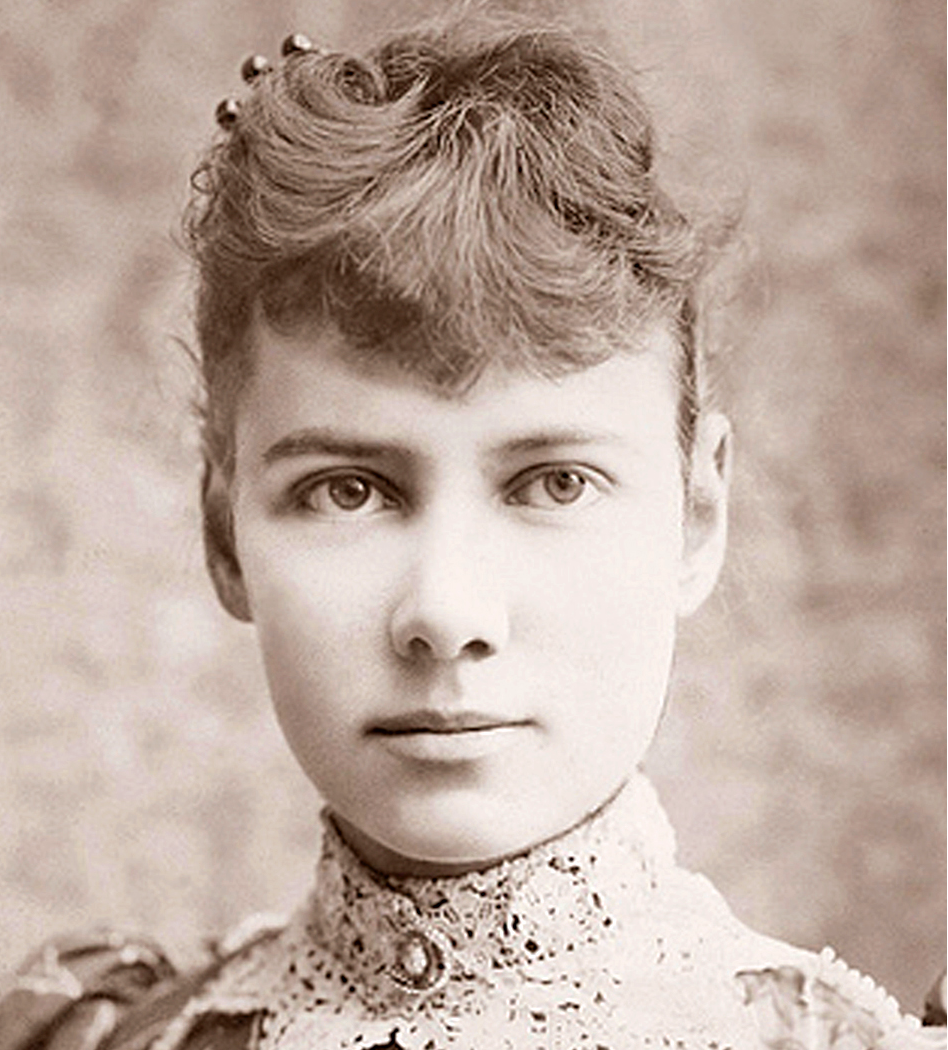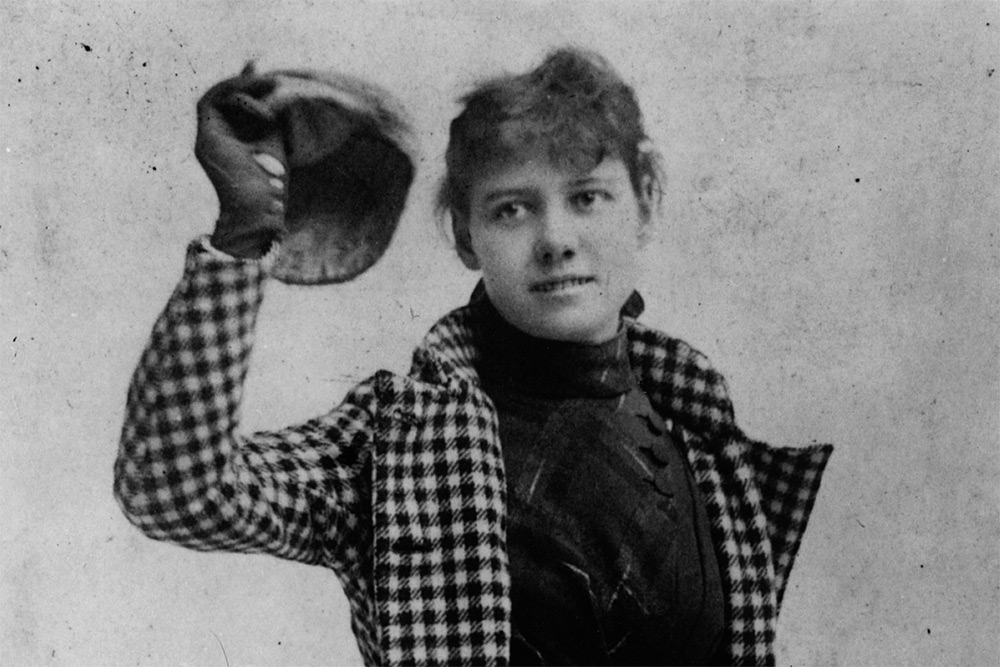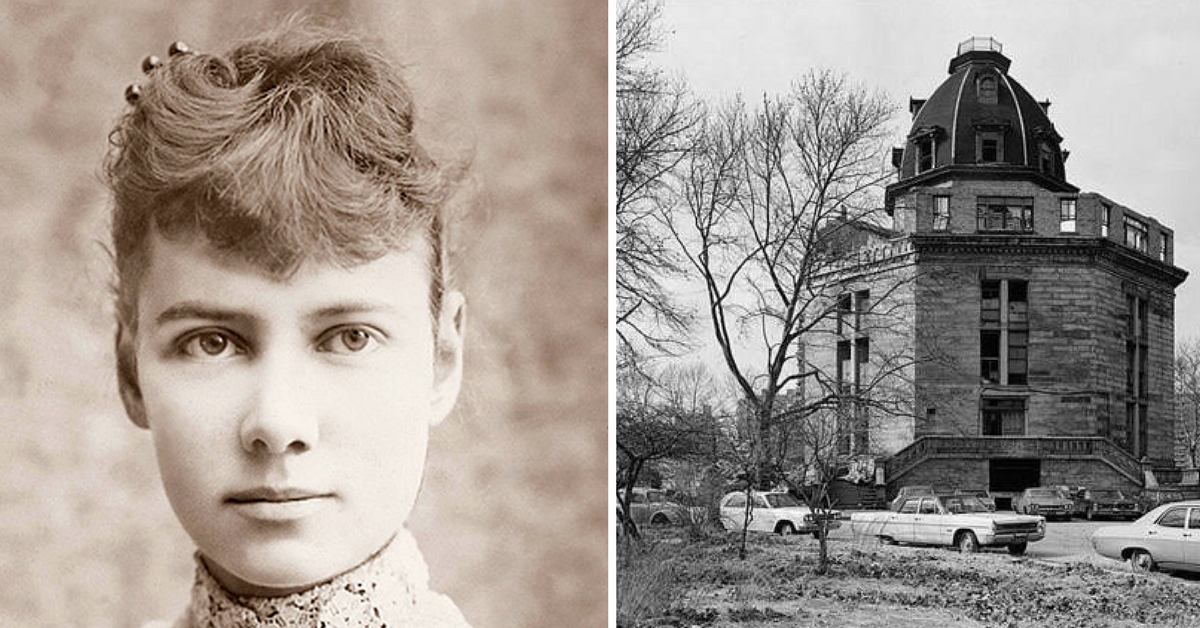In 1887, an American journalist best-known by her pseudonym "Nellie Bly" helped reform the inner workings of New York's mental institutions and made a name for herself as the pioneer of a new kind of investigative reporting.
She also wrote her way into fame for taking a record-breaking trip around the world in 72 days, inspired by Jules Verne's famous novel Around the World in Eighty Days.

Humble Beginnings
Bly was born Elizabeth Cochran on May 5, 1864 in Cochran's Mills, Pennsylvania. From a young age onward, Bly showed interest in school and writing, but after the death of her father she was forced to drop out of school due to a lack of money.
In 1880, after her family moved to Pittsburgh, a young Bly penned an anonymous letter addressed to the Pittsburgh Dispatch's editor, George Madden, after reading a sexist column titled "What Girls Are Good For." The editor was so impressed with Bly's passion and writing skill that he sought her out and gave her a chance to write for the paper again. Madden eventually offered her a full-time position and assigned her with the pen name "Nellie Bly," since female newspaper writers didn't use their real times at the time.

Ten Days In The Mad-House
Nellie took it upon herself to delve deep into issues affecting women and write investigative articles that involved her going undercover. However, being in a field dominated by men who didn't always agree with her opinions meant that she would have to be reassigned to "women's pages" where she would cover topics like fashion, arts and gardening.
Unsatisfied with the role she's been handed, Bly left the Pittsburgh Dispatch in 1887 and moved to New York City, where she hoped she'd be given the chance to write more meaningful pieces.
Four months later, a 23-year-old Bly found a position within Joseph Pulitzer's newspaper, The New York World. At the time, mental institutions were a hot topic and editors at The World challenged Bly to come up with a big story that would place them ahead of the competition and solidify her role as a "detective reporter."
She decided to go undercover at Blackwell's Island, New York City's most notorious mental asylum and pose as a mentally ill patient so she could expose the sinister activities taking place behind closed doors.
Women admitted at Blackwell's rarely ever made it out and the employees remained mum about what went on inside the institution, so there was really no other way for Bly to find out if the rumors of abuse were true.
Bly was promised that she'd be released after 10 days if she took on the assignement. Following this agreement, the young reporter got into character and practiced her expressions in front of a mirror until they were convincing enough.
She checked into a boarding house, but was picked up by police the next morning because she was deemed "crazy." She faked amnesia at the courthouse and the judge concluded that she had been drugged.
Bly was then admitted to Blackwell's, where she would experience one of the biggest shocks of her life. She knew the conditions would be bad, but she could've never imaged how awful they would really be.
The hospital was over capacity and there weren't enough rooms to house all of its patients. Nurses and doctors were abusive towards the patients, and rats infested the entire property.
As for meals, they were fed spoiled food, uncooked bread and contaminated water.
"The water was ice-cold and I again began to protest. . . . My teeth chattered and my limbs were goose-fleshed and blue with cold," wrote Bly. "Suddenly I got, one after the other, three buckets of water over my head "” ice-cold water, too, into my eyes, my ears, my nose, and my mouth. I think I experienced some of the sensations of a drowning person as they dragged me, gasping, shivering, and quaking, from the tub. For once I did look insane. . . ."
Bly also found out that there were lots of women living in the premises that weren't mentally ill, they were immigrants who couldn't speak English.
Once her 10 days were up, a lawyer from The World came for Bly. During her short stay at Blackwell's, Bly noticed that the asylum's condition and the mistreatment of the patients by the staff was enough to drive a person crazy.
Going Public
On the Sunday after her release, Bly's story was published.
"What, excepting torture, would produce insanity quicker than this treatment?" wrote the reporter.
The scandalous revelations forced New York City officials to launch an investigation into Blackwell's as well as other institutions for the mentally ill.
Bly also wrote a book about her experience titled, Ten Days in a Mad-House. Thanks to her exposé, the city approved additional funding to help improve services and treatment options for those affected by mental illness.
Around The World In 72 Days
The reporter became a household name and rose through the ranks at The World. She continued to write investigative pieces relating to politics, poverty and women's issues that helped change the way certain things were done.
A few years later in 1889, an adventurous Bly decided to take on a new challenge and attempt a publicity for The World inspired by Jules Verne's novel Around the World in Eighty Days. She traveled alone around the world and made in back to New York in 72 days, 6 hours and 11 minutes, beating the novel's protagonist's time by 8 days.
Upon her return, Bly became even more inspirational and a celebrity in her own right. She lived long enough to see women finally get the right to vote before suffering from a fatal stroke at the age of 57 in 1922.
Bly may no longer be a household name, but her legacy still remains and will be immortalized in a new TV series. Kate Mara will portray Bly in the project. There's no release date as of yet, but it is expected to premiere soon.
